Top 10 Most Haunted & Ghostly Destinations in Philippines
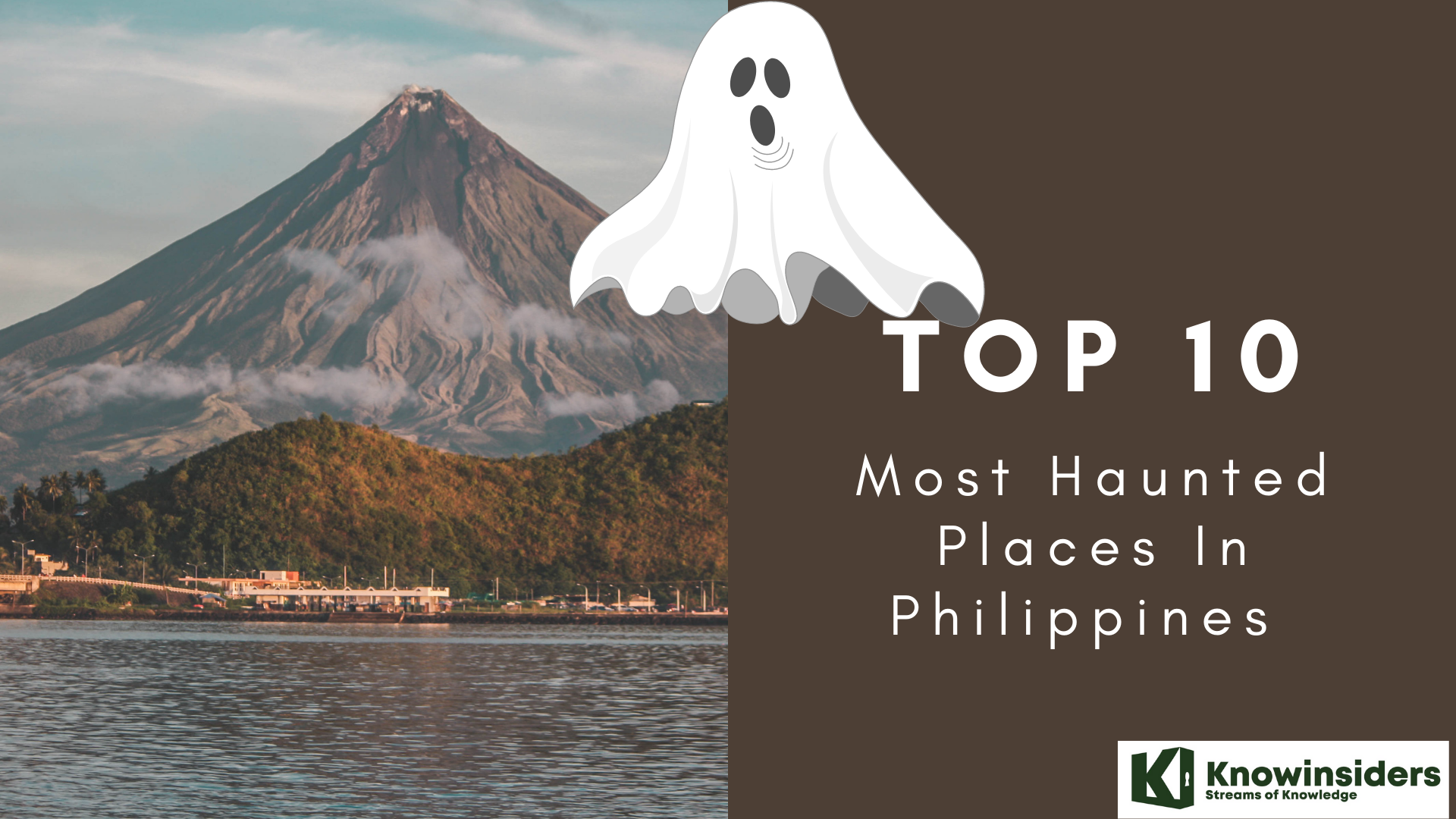 |
| Top 10 Most Haunted Places in Philippines. Image: KnowInsiders.com |
| Tabled of Contents |
There are undoubtedly many hidden gems in the Philippines, ranging from historical sites to remote white sand beaches. Though it's ideal for those looking for a quick and easy vacation, what happens when night falls? Would you still have the guts to go exploring?
Among these stunning sites are purportedly haunted buildings, hospitals, and other establishments that the ordinary Juan would never set foot in. Still, would you? If so, get ready for odd drops in temperature, strange noises, and enigmatic shadows.
The top ten haunted and ghostly locations in the Philippines are as follows:
What are the most haunted and ghostly places in Philippines?
10. Balay Negrense (Negros Occidental)
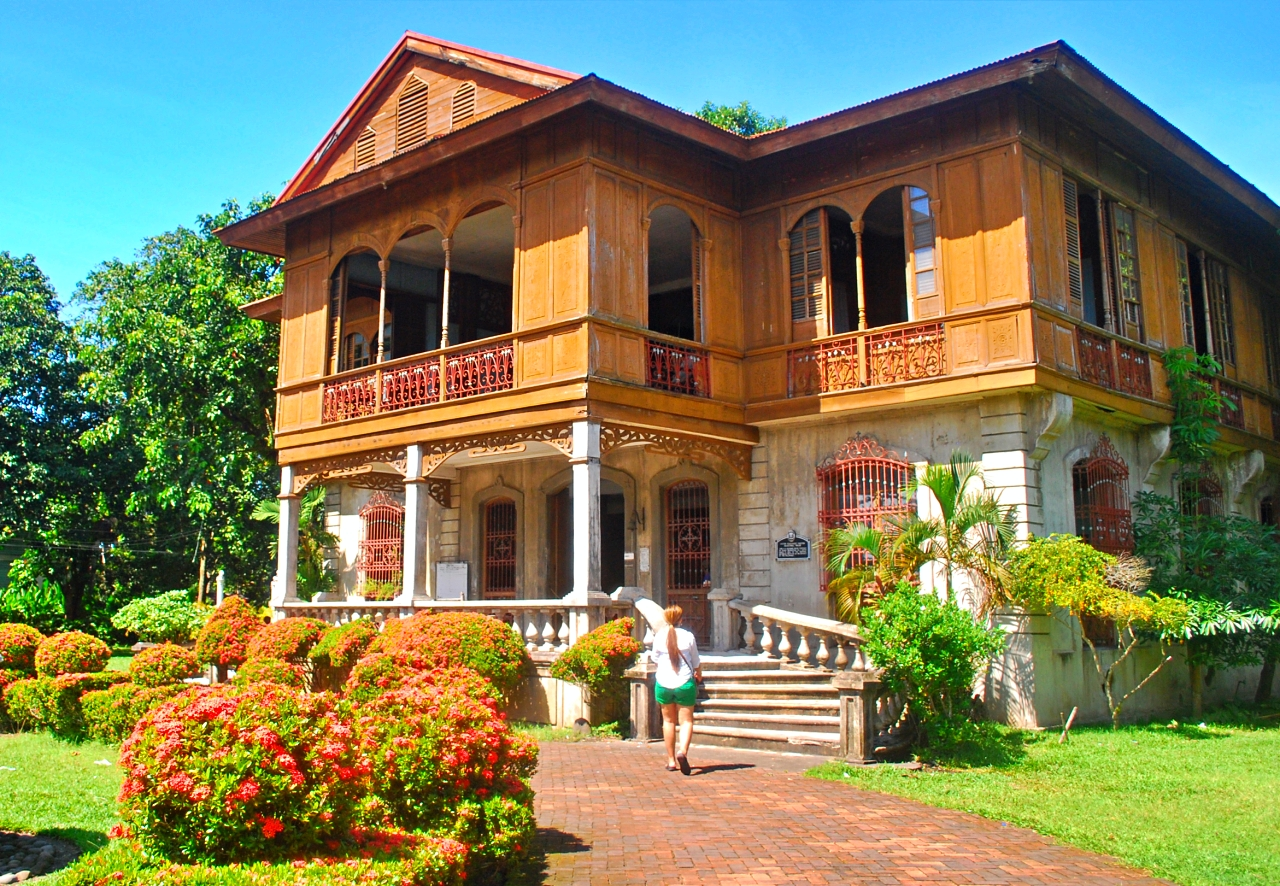 |
| Photo: Nomadic Experiences |
The Balay Negrense Museum is a beautifully designed museum located in Silay City, Negros Occidental, that highlights the 19th-century Negrense sugar baron lifestyle. It is the first museum to open in the province of Negros Occidental and one of Silay City's most popular historic homes.
The home was formerly Victor F. Gaston's ancestral property. Gaston was raised by Prudencia Fernandez and Yves Leopold German.
Following his marriage to Calatagan Batangas native Prudencia Fernandez, the eldest Gaston began the sugar plantation. He moved to Negros after starting to experiment with growing sugar cane on his farm.
There is a lovely garden and a water fountain in front of the house. The building's design, which resembles a "house of stone," is a constant reminder of Philippine colonization. In contrast, the basement is built of brick rather than stone.
The balayong tree, a native hardwood, was used to make the foundation pillars for the building. The building's floor is also made of tree wood; instead of using tile for the upper stories, galvanized iron covers the wood.
This historic house serves as both a museum and a tourist destination because of the community's preservation efforts. However, if the only reason for your visit is leisure or education, heed this word of caution: avoid staring into the mirrors as you may see more than you bargained for.
9. Clark Air Base Hospital (Angeles, Pampanga)
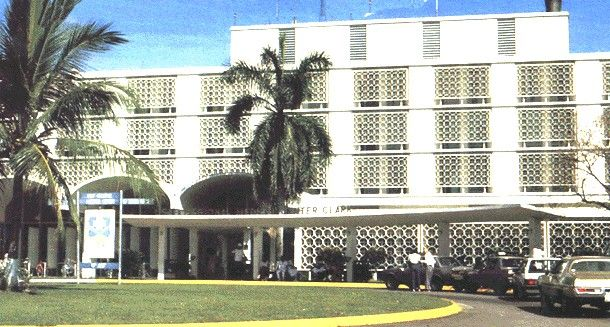 |
| Photo: Pinterest |
Both World War II and the Vietnam War saw the use of Clark Air Base Hospital. It is currently lying in the Clark Freeport Zone, abandoned.
The locals think this hospital is haunted because so many soldiers died there. The unusual acoustics produced by the dilapidated infrastructure, when combined with the interior rooms' darkness, can easily evoke thoughts of paranormal activity. There are distinct areas within the hospital. Squatters have reclaimed some, but it's easy to explore the areas that have been most damaged by weather and time.
During World War II and the Vietnam War, the now-abandoned building served as a military hospital. The location is said to be haunted by locals and paranormal investigators, who have heard stories of hauntings and soldier ghost sightings.
8. Malacañang Palace (Manila)
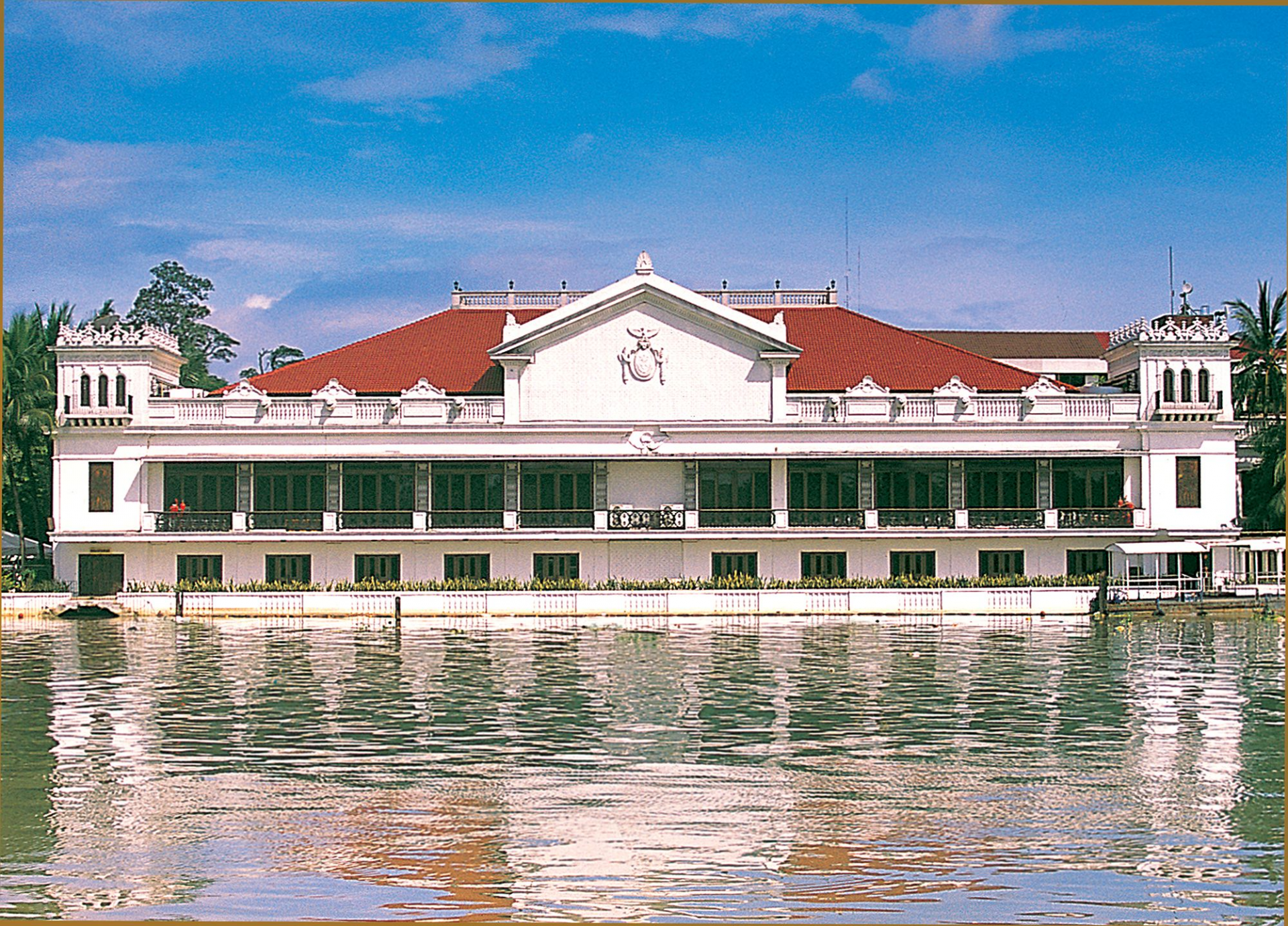 |
| Tatler Asia |
The official name for Malacañan Palace, also known as Malacañang Palace, is the home of the Philippine President. The palace is situated in Manila on the Pasig River's north bank. The official residence of the Philippine President is known as Malacañan Palace, but in Filipino it is called Palasyo ng Malakanyang. It is commonly called Malacañang in everyday speech and popular media, and this abbreviated term is also utilized to refer to its function as the president's office. The public rarely has access to the state and historic rooms within the palace. During political unrest, the palace is closed and heavily guarded; however, access was much more limited before the Marcos administration than it is now. The public's lack of access was especially noticeable in the 1950s, during the Ramon Magsaysay administration. Protesters frequently gather nearby on Mendiola Street to voice their objections to the government.
For some people, experiencing a paranormal event at the Palace might be considered a luxury rather than a haunting. Several employees are said to have seen a kapre and an anonymous resident while they were on duty. There are also those who believe that the late president Manuel L. Quezon's ghost lingers at the palace.
Others, however, have claimed to have seen a black-clad woman staring out of a window.
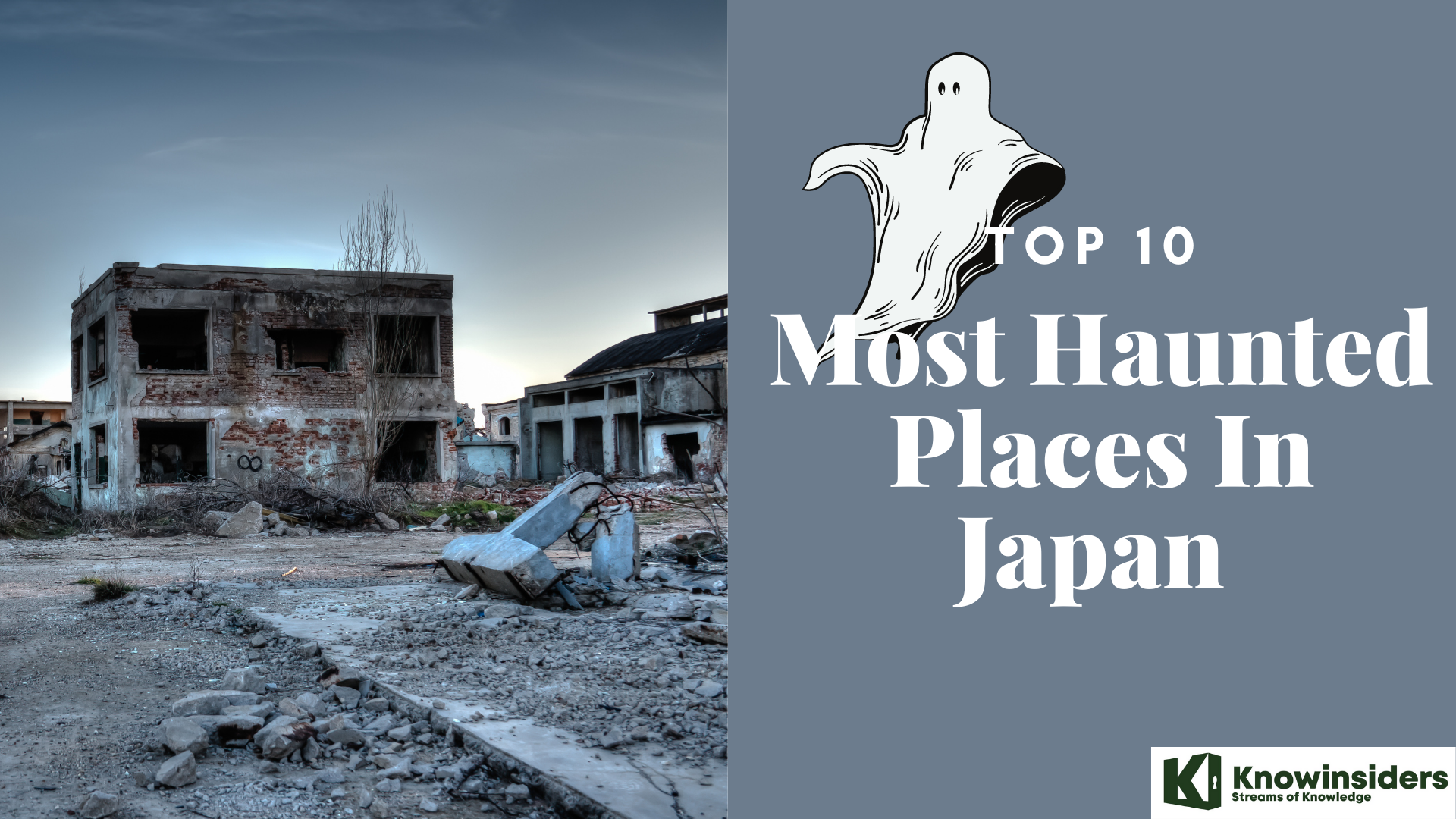 Top 10 Most Haunted Places in Japan Top 10 Most Haunted Places in Japan If you are looking for the best haunted stories to tell, Japan is the right place. Take a look at these terrifying and scary places ... |
7. Balete Drive (Quezon City)
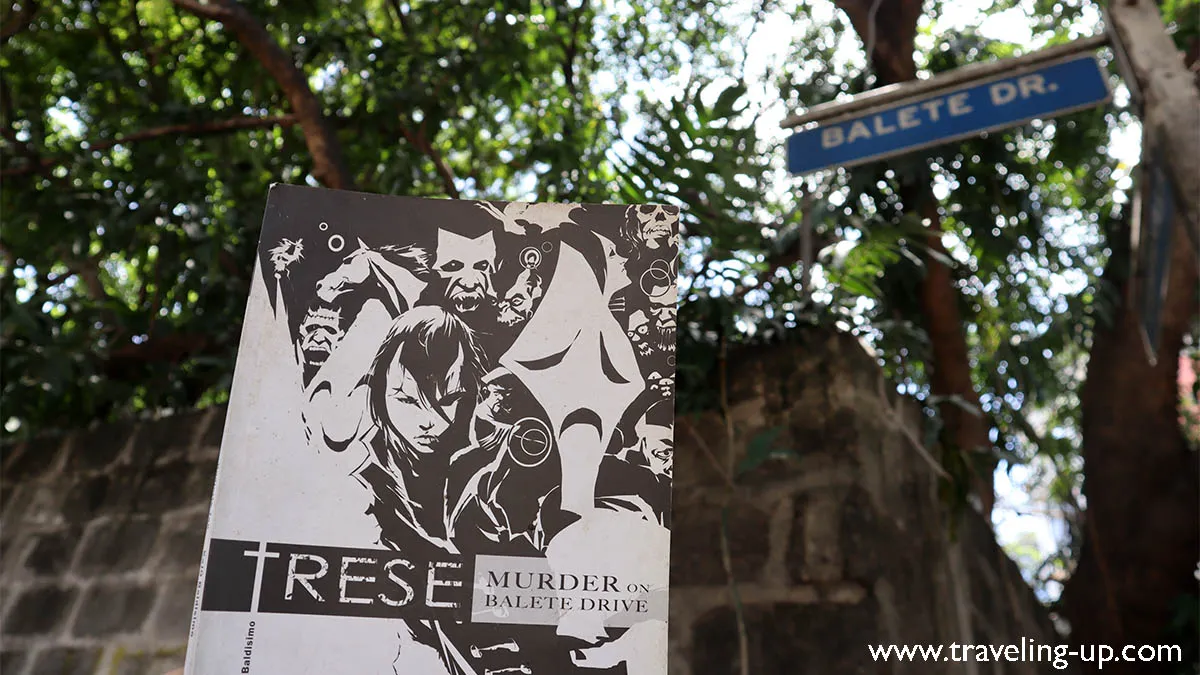 |
| Photo: Travel Up |
Balete Drive is a strip of road that runs through the center of Quezon City's New Manila and links major thoroughfares like N. Domingo and E. Rodriguez Streets. The enormous Balete trees that once bordered the property, along with the enormous Spanish homes (like the 200-year-old "Bahay Sentenaryo") and ancestral mansions, gave rise to the street's name. The Balete trees, however, offer more to the road than just aesthetic appeal. It is rumored that, beginning at midnight, a well-known white woman known as "Babae sa Balete Drive"—the girl in Balete Drive—appear and haunt drivers.
Because of the prevalent belief in Filipino culture that Belite trees are enchanted and the dwelling place of otherworldly spirits and beings, kids are constantly cautioned against playing near betel trees for fear of upsetting these enigmatic beings. There are other old legends surrounding the Balete tree, such as the ones that say fairies and elves reside there and typically invite children to visit their kingdom; however, once the children eat anything from their table, they will be trapped there indefinitely.
The legend of the white woman at Balete began in the 1950s, when reports began to circulate of a white woman who would occasionally appear in people's rearview mirrors, appear out of nowhere, or sit in the backseat of cars. There have been several published accounts of the tale, and each is distinct. However, who is this enigmatic entity? And why is she frightening people by walking around?
According to one account, this infamous person was a University of the Philippines student who was sexually assaulted and killed by a taxi driver on her way home. Her body was then thrown by the Balete tree, according to a barangay officer who lived close to Balete Drive. Her ghost has been roaming the world ever since, either trying to find justice or her attacker.
According to a different account, a woman who lived in one of the old mansions on Balete Drive was murdered by her own family and now she flags down every vehicle to ask for assistance. Some claim she was a real person who was murdered on Balete Drive in a hit-and-run incident.
6. University of Santo Tomas
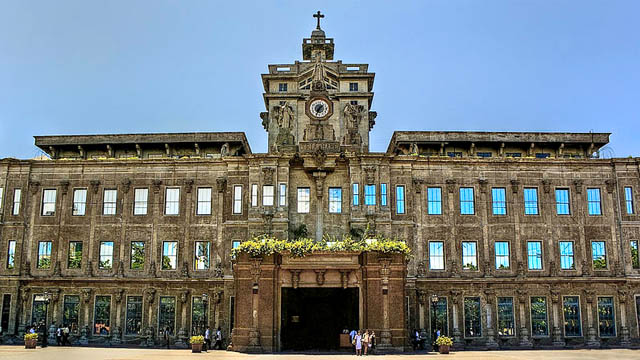 |
| Photo: Rappler |
The Pontifical and Royal University of Santo Tomas, Manila, officially known as the University of Santo Tomas (UST) is a private, Catholic research university located in Manila, Philippines. Established by the Spanish friar Miguel de Benavides, the Archbishop of Manila, on April 28, 1611, it holds the distinction of being the oldest university charter still in existence in both Asia and the Philippines. It is also among the largest Catholic universities globally in terms of total enrollment on a single campus. The Order of Preachers is in charge of the University of Santo Tomas System's main campus.
Spain's King Charles III bestowed the title "Royal" upon UST in 1785. In 1902, Pope Leo XIII designated UST as a "Pontifical" university. In 1947, Pope Pius XII gave UST the moniker "The Catholic University of the Philippines." The nation's first and oldest schools of engineering, law, medicine, and pharmacy are located at UST.
The main campus, which houses 22 degree-granting colleges, a parish church, and a teaching hospital, is the biggest university in the city of Manila. The National Museum designated four of the university's buildings as National Cultural Treasures in 2011.
Established in February of 1611, this university is without a doubt the oldest in the nation and among the largest Catholic universities in Asia. The organization has endured bombs, wars, and natural disasters. Given its age, it should come as no surprise that there are multiple ghost stories associated with it. As an illustration, there is a legend about deceased patients using the hospital elevators at the school. There are also stories of young women hanging themselves in the restrooms and of nobody wanting to move a piano in the Albertus Magnus Building for fear of upsetting a ghostly child.
 Top 10 Highest Mountains in Philippines Top 10 Highest Mountains in Philippines The Philippines is blessed, not only with beautiful beaches and tropical island destinations but also with challenging mountain trails that are sure to provide a ... |
5. Bahay na Pula
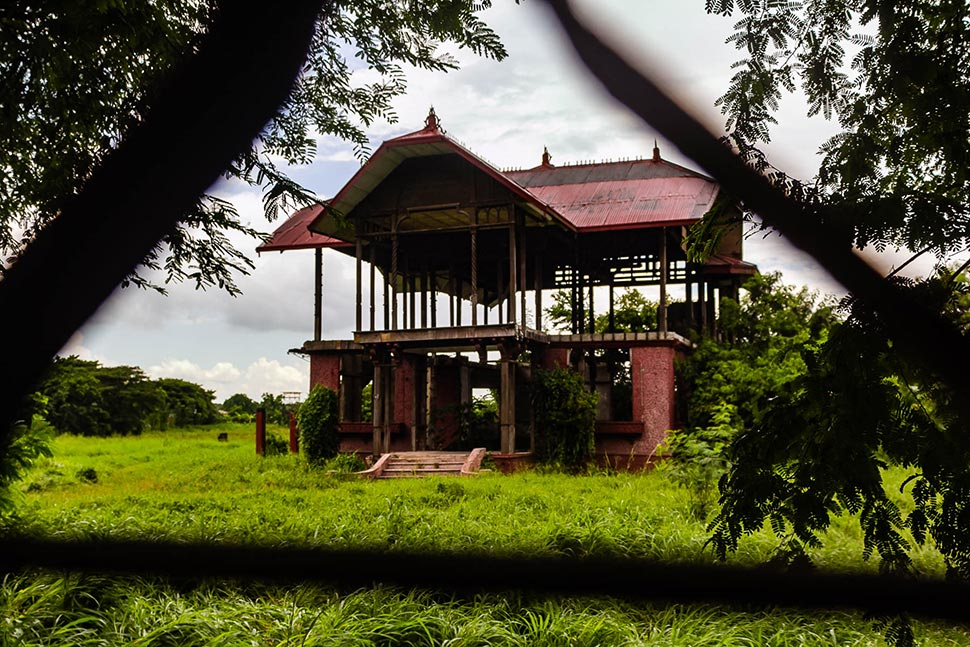 |
| Photo: Esquire Philippines |
Beside the highway, close to the Bulacan border, sits a lone house between San Miguel and San Ildefonso. Tamarind, camachile, and duhat trees can be found nearby, their leaves strewn all over the sidewalk. Just the foundation and frame of what was once a stunning home remain, leaving it a shell of what it once was. Bahay na Pula is this.
But the blood-red hue doesn't seem to be going away. The name Bahay na Pula originated from the color's remarkable contrast against a vast green field devoid of any other houses. Known by many as the Ilusorio House, it was constructed in Barangay Anyatam in 1929 by Don Ramon Ilusorio, a prosperous local landowner who owned acres of property. But it turned out that the color was a premonition of the violent crimes that would eventually occur inside its walls.
Bahay na Pula was taken over by the Japanese and used as one of their barracks during World War II. General Tomoyuki Yamashita of the Japanese Imperial Army led the 14th District Army's Geki Group, which launched an attack on Mapaniqui, Pampanga, on November 23, 1944. The army believed the town to be a stronghold of the Hukbalahap, also known as the Hukbo ng Bayan Laban sa Hapon.
The men were gathered, thrashed, and put to death. One man was made to eat his amputated penis after having them chopped off. After being piled up, the bodies were set on fire.
The women were taken to the notorious red house as a form of punishment for the town, where they were repeatedly and routinely raped. A few of them were girls, no older than eight or nine.
Just two of the women who managed to escape abuse within this home were Sisters Lita and Mileng from Mapanique. The women, who are now in their 80s, told the BBC how the Japanese ordered more than a hundred girls to bring supplies to the house after pillaging their village and executing all the men they thought to be guerillas.
The house is fighting its own battle as the survivors carry on with theirs. Bahay na Pula has deteriorated due to decades of neglect and even a suspected family dispute over who owns the land and home.
The history of the house did nothing to improve its standing. Since then, the locals have thought it to be haunted. There are persistent rumors of ghostly apparitions from the windows and veranda, despite the denials of some of its caregivers. A few even reported hearing what they assumed to be cries for assistance from the spirits of those who perished there. There are still skulls being dug up in the area, according to residents of nearby villages.
Bahay na Pula became a popular location for TV shows and movies, including Okatokat in the 1990s, thanks to its reputation, which attracted the attention of both journalists and film directors. Television programs such as Motorcycle Diaries, Kasindan-sindak, and Kapuso Mo Jessica Soho have also looked into the area's reported ghost stories for Halloween.
4. Laperal Mansion, Baguio
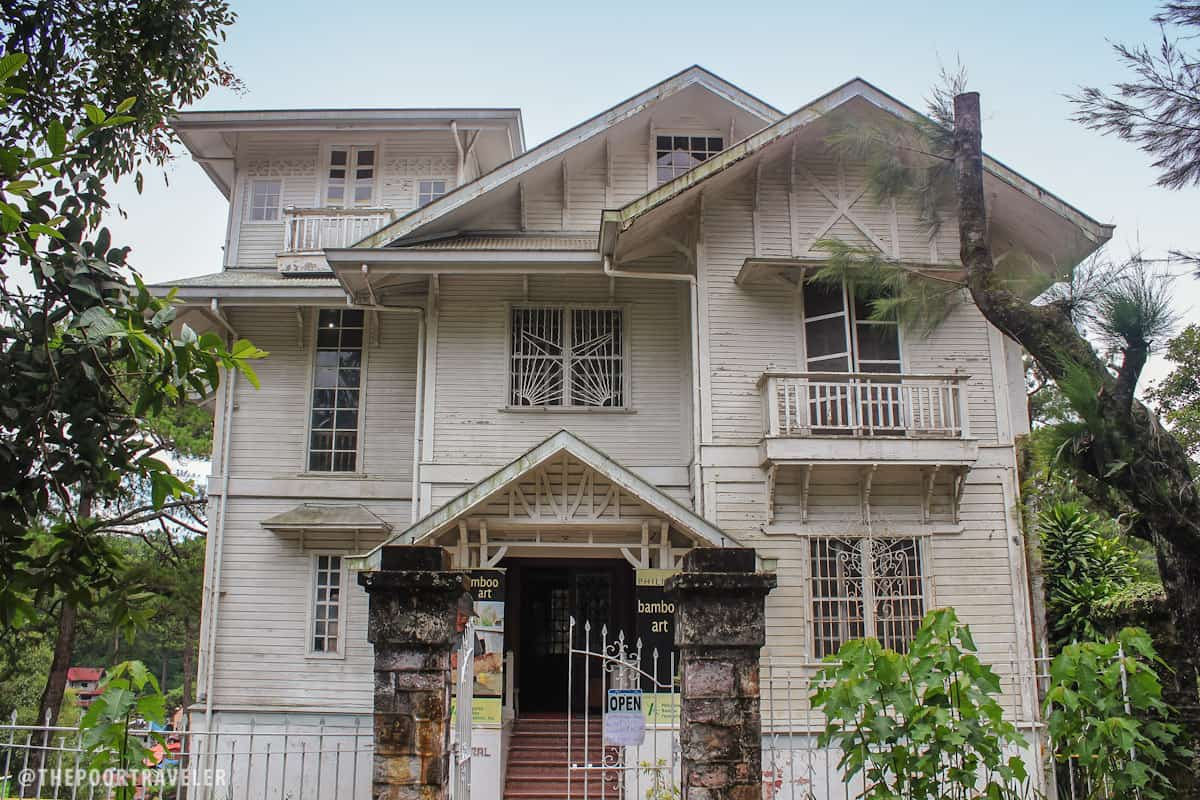 |
| Photo: The Poor Traveler |
It is said that numerous mysteries and terrifying stories lie behind the mist that shrouds the streets and hills of the City of Pines. They claim that Baguio's map is filled with haunted homes and cursed hotels that have served as havens for restless, occasionally hostile ghosts and spirits. The Laperal White House is one of them.
Situated next to the Teachers' Camp, which is purportedly haunted by ghosts, the Laperal White House is a visually striking building on Leonard Road. Numerous tales have been told. Unfortunate onlookers have reported seeing a small child standing still on the third step of the staircase in front of the house. A woman has been observed by some peering out the glass windows. Even when the house was completely empty, some people have reported hearing loud noises and angry voices coming from within. Others have reported experiencing the terrible sensation of being watched and unwanted. Even the guards are afraid to enter at night.
One day, a guard was given the order to chop down a fortune plant on one side of the house by the house's caretaker, who resides in a different building on the property. The guard became sick and was immobile for several days. Another guard related his own insider experience. His wife called him once while he was going around the house. Up until she questioned who he was with at the moment, the call went smoothly. It seems that the wife kept hearing a female voice. The guard, however, was by himself.
The White House is known to spook even the employees and residents of nearby establishments. A clairvoyant-related incident occurred at PNKY's Restaurant, which is located directly across from the infamous house. "PNKY's was just on ground level at that time," Ironwulf.net's Ferdz Decena tells us. "The Clairvoyant was shocked to see a woman standing behind her and the reflection of the house when she peered into the restaurant mirror."
The White House's bloody, lengthy past may have contributed to its Amityville reputation. Constructed during the American colonial era in 1920, this house boasts an American Colonial architectural style. One of Baguio's oldest clans, the Laperal family, led by Don Roberto, lived there. It was rumored that his wife Dona Victorina loved the garden's lucky plants.
Japanese soldiers brought terror to their door during the height of World War II. The home was converted into a garrison, where many people were brutally tortured and killed (if some accounts are to be believed). The Laperal family was one of them, with the exception of Don Roberto, who would survive the war but fall to his death from the front steps of the house after tripping and falling.
But who are the woman by the window and the little girl on the stairs? It was reported that the young girl perished in a different mishap. The poor girl crossed the street and got run over while chasing after her nanny, who was on the other side. In one of the house's bedrooms, the nanny—I'm not sure if it was the same one or a different one—was also slain. It's thought that the nanny was the woman who was standing by the window, surveying the street.
3. Manila Film Center
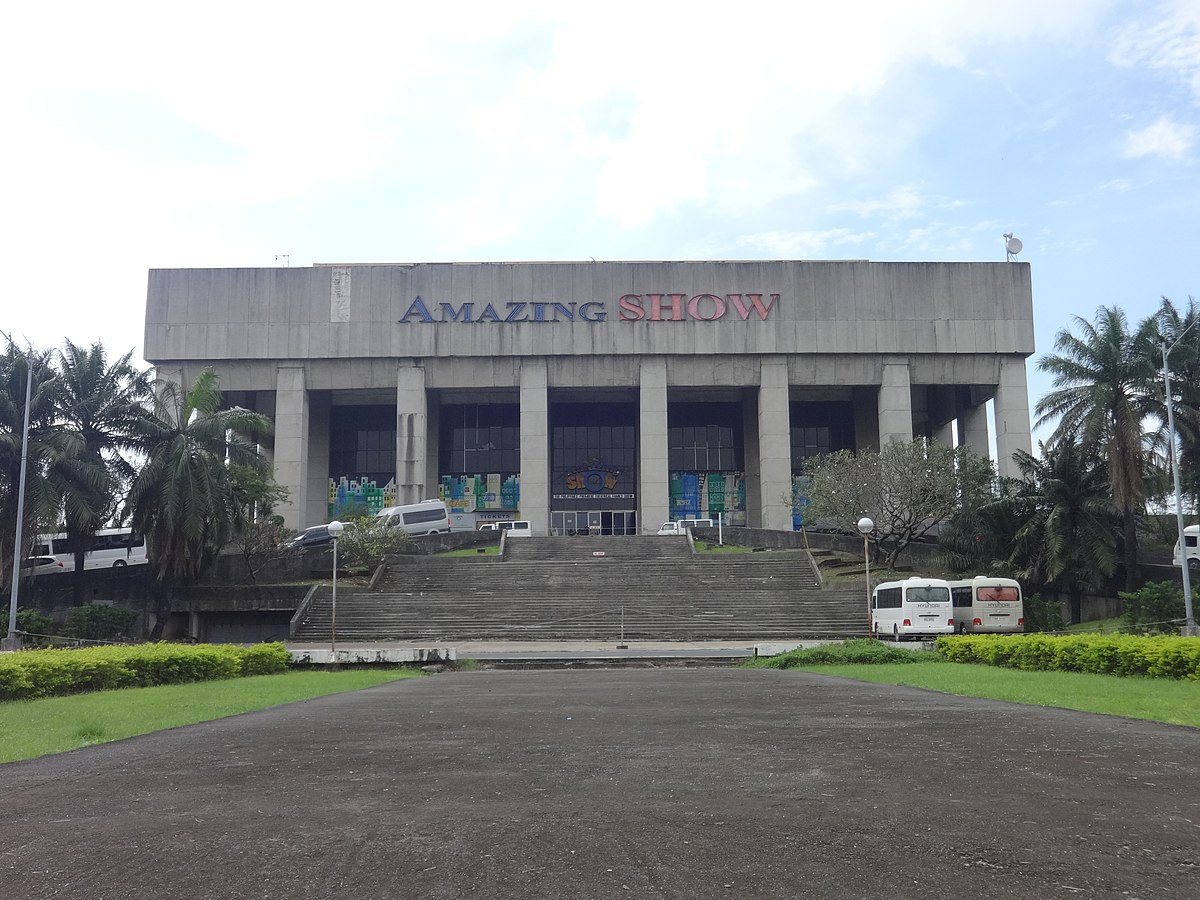 |
| Photo: - Wikipedia |
Like many other haunted buildings, the Manila Film Center is thought to have a sad past. It was intended to serve as the focal point of the Manila International Film Festival, which is Asia's version of the Cannes Film Festival in France. It is situated in Manila close to the Cultural Center of the Philippines.
The construction of a film center modeled after the Parthenon, which was to be the centerpiece of the first Manila International Film Festival in January 1982, was ordered in 1981 by the former First Lady Imelda Marcos. Reports state that in order to expedite its construction, 4,000 workers were hired to work nonstop. Many workers were buried beneath the debris when the film center's ceiling collapsed on November 17, 1981, at around three in the morning. One worker was covered from the waist down in cement, according to video that GMA news was able to obtain.
He was eventually set free after several hours of efforts to save him, but he had already died.Regarding the incident itself, there are very few, if any, reports from the Pasay City police, the film center, or even newspapers. Nonetheless, there are numerous tales of the structure being haunted by the spirits of laborers who were abandoned to perish in the wreckage while work went on to ensure the Film Center's timely completion. A survivor claimed that multiple men were buried in wet cement after being abandoned. Eliodoro Ponio, the project contractor, claims that they were able to locate and recover the remains of every victim.
2. Fort Santiago, Intramuros
 |
| Photo: Hotels.com Philippines |
Miguel Lopez de Legazpi, a Spanish navigator and governor, constructed Fort Santiago (Spanish: Fuerte de Santiago; Filipino: Kutà ng Santiago) as a citadel for the newly founded city of Manila in the Philippines in 1593. The walled city of Manila, Intramuros, is home to the defense fortress.
One of Manila's most significant historical sites is the fort. During World War II and the Spanish Empire, many people died in its prisons. Prior to his execution in 1896, José Rizal, a national hero of the Philippines, was held captive in this location. The museum of the Rizal Shrine showcases items from the hero's collection, and the fort has bronze footprints engraved on the ground that depict his last steps from his cell to the site of his execution.
The Manila Cathedral and Palacio del Gobernador, also known as Governor's Palace and the current home of the Commission on Elections, are both just a short distance away.
Before the Philippines were freed, Fort Santiago served as the colonial headquarters for both the Spanish and American governments. Its ancient walls still feel strong and commanding during the day, but at night they exude an air of gloom and domination. Many of the Fort's current occupants claim to have seen ghosts of Filipino soldiers from the past and to still hear screams coming from the dungeon. This isn't shocking, though, because the Japanese murdered and tortured a large number of Filipino guerillas and soldiers in this area during World War II. In fact, there was a tiny room beneath the fort that you could only enter by crawling in on your stomach when the Americans eventually took control after the Japanese occupation. Water from the surrounding area would rush in there and drown the prisoners who were trapped; it is likely that 20 bodies were discovered.
1. Diplomat Hotel, Baguio
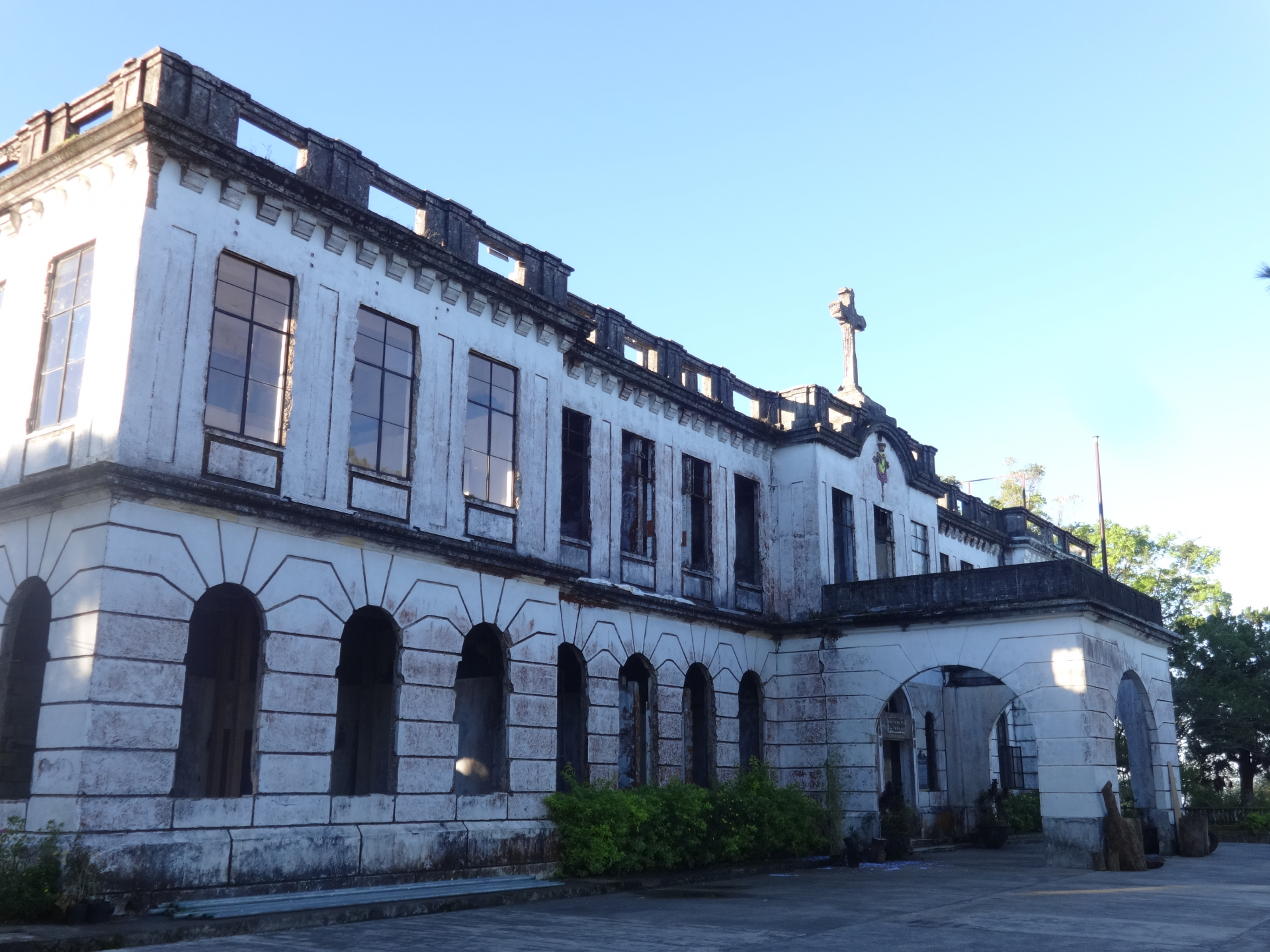 |
| Photo: Wikipedia |
Despite having been constructed initially as a retreat for Dominican Order friars, the history of this run-down structure has not been a tranquil one.
Perched atop a hill in the renowned Philippine City of Pines, the Dominican Hill Retreat House was constructed in 1913. It was eventually invaded after World War II broke out and turned into a camp for refugees fleeing the Japanese army. A great deal of the population was massacred, raped, tortured, and even had nuns and priests decapitated by the Japanese secret police, the Kempeitai.
The elegant and stunning Diplomat Hotel was transformed from a war-torn structure in the 1970s. However, by the 1980s, the hotel had closed and was abandoned. The dilapidated, abandoned structure gained notoriety as one of the nation's most haunted ruin sites. Its gray and faded red walls are surrounded by a variety of ghost stories and folklore. Numerous witnesses claimed to have heard screams, cries, door-bangling, and other odd, desperate noises, as well as seeing headless apparitions at night. Some people think the building is haunted by the specters of its gloomy past.
Following a surge in interest in the purportedly haunted ruin, the national government is currently renovating the old hotel to become a Heritage and Nature Park. The hotel's west wing has been cleaned and remodeled into an event space. It features two floors and an accessible roof deck with a panoramic view of the city. It is now a location to encounter the eerie beauty of Baguio City's frigid weather.
 Top 10 Biggest & Best Shopping Malls in the Philippines Top 10 Biggest & Best Shopping Malls in the Philippines You have probably heard this a million of times, but one of the many things that make Filipinos unique is our penchant for shopping and ... |
 Top 10 Richest Kids In Philippines Top 10 Richest Kids In Philippines If you've ever watched the movie "Crazy Rich Asians", you'll be excited to know more about the Philippines’ real-life ones: Top 10 Richest Kids ... |
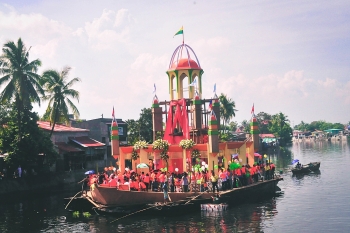 TOP 15 Most Popular Holidays in the Philippines TOP 15 Most Popular Holidays in the Philippines 2021 is coming with lots of vacations as well as holidays - festivals in every corner of the Philippines. Knowinsider ranked the 15 biggest ... |


























